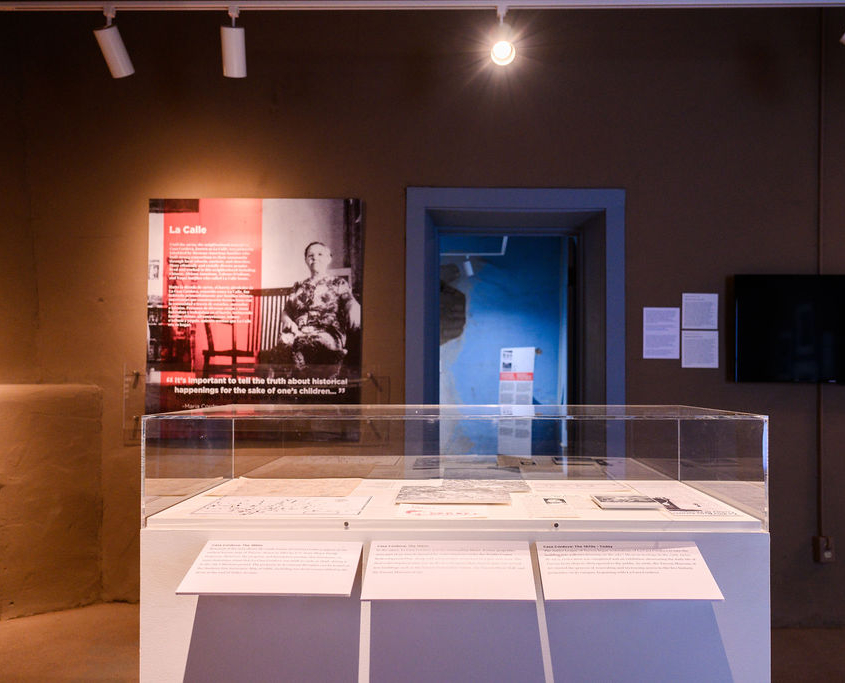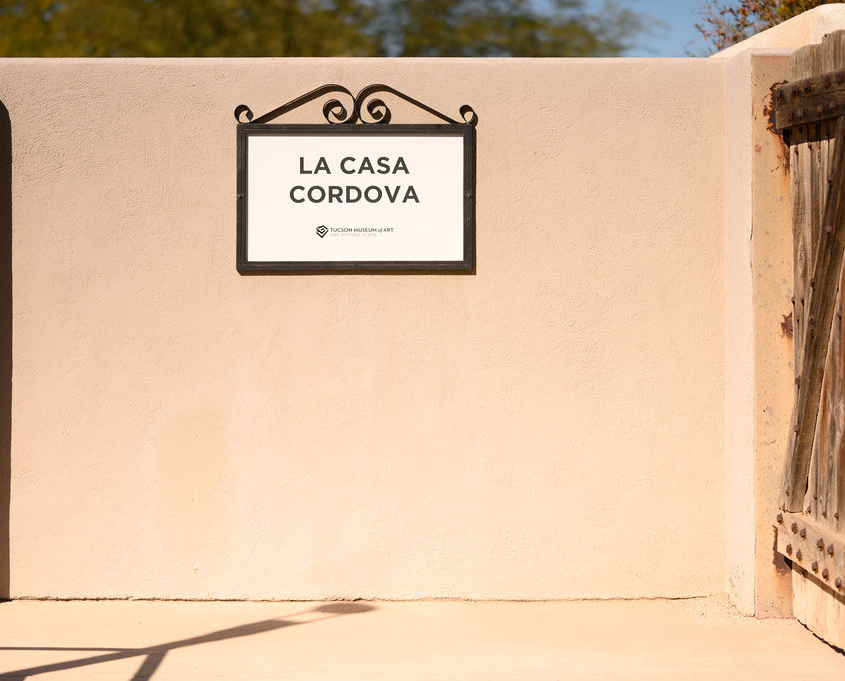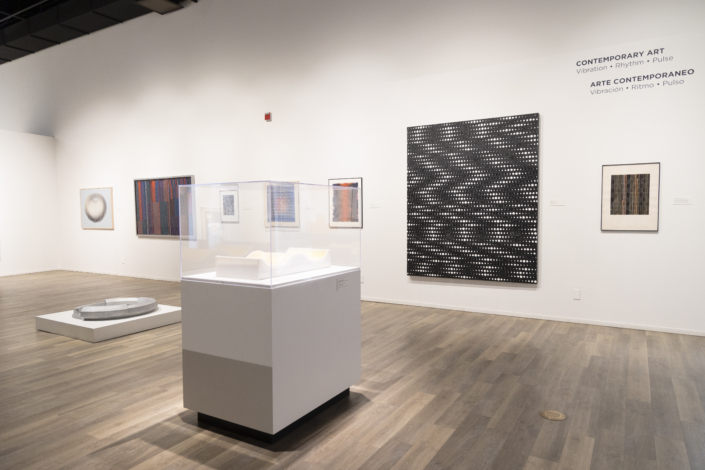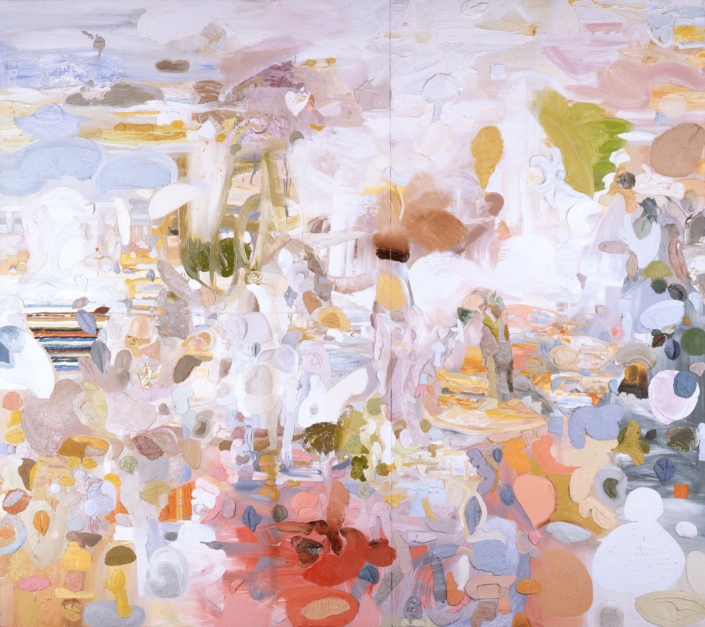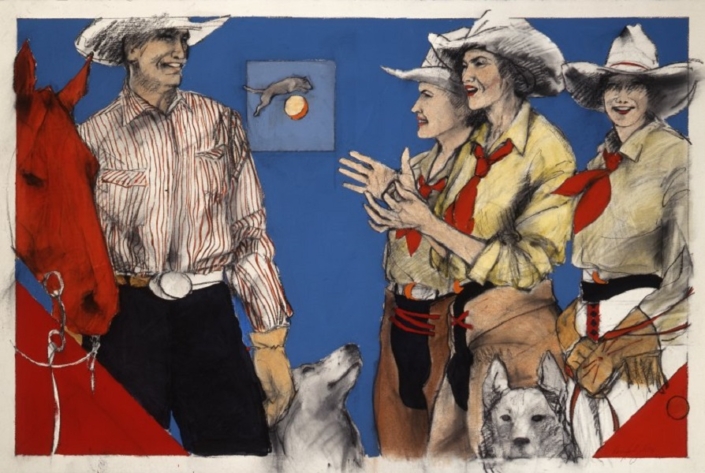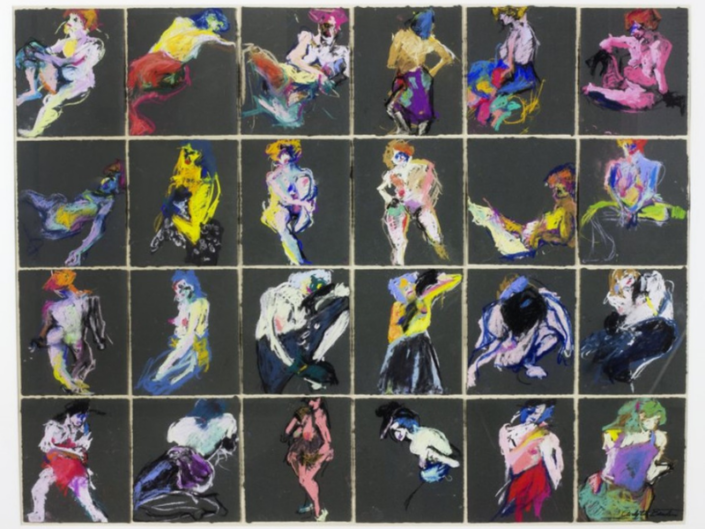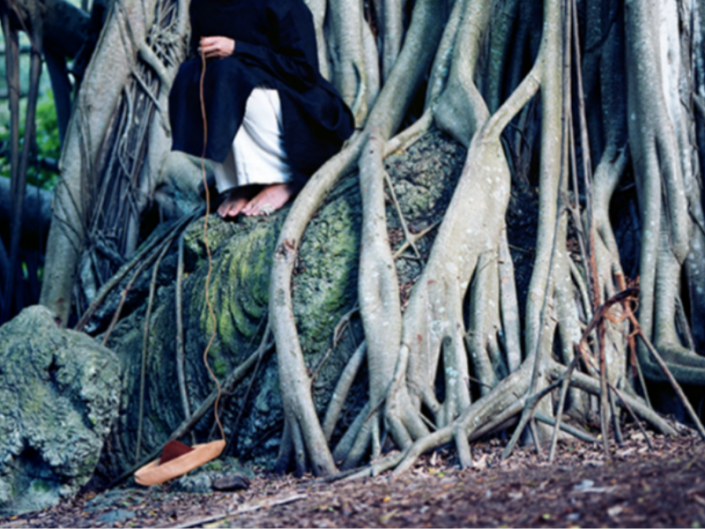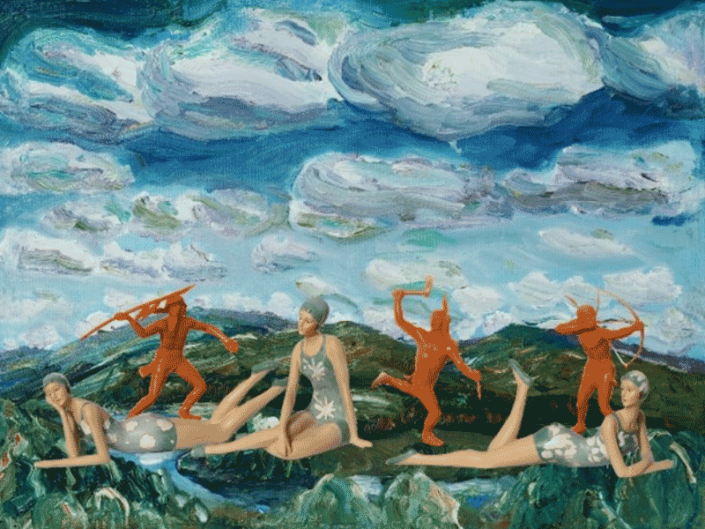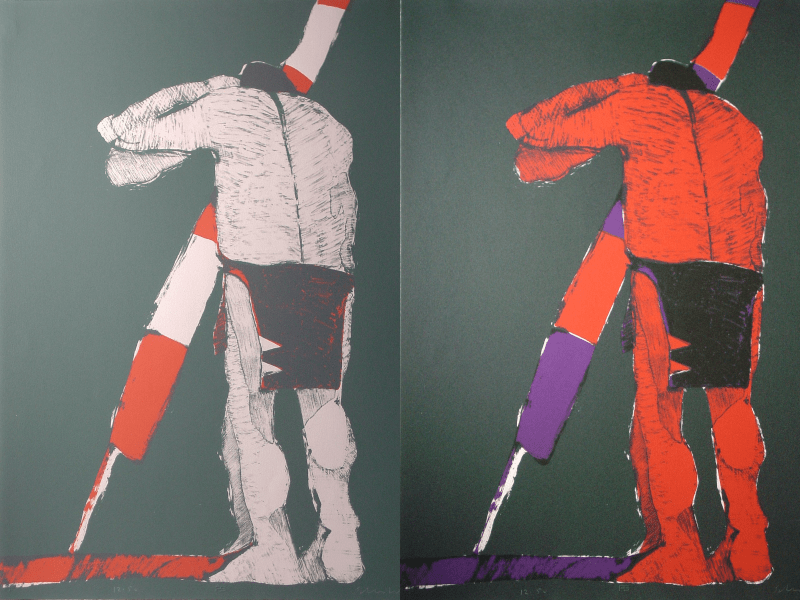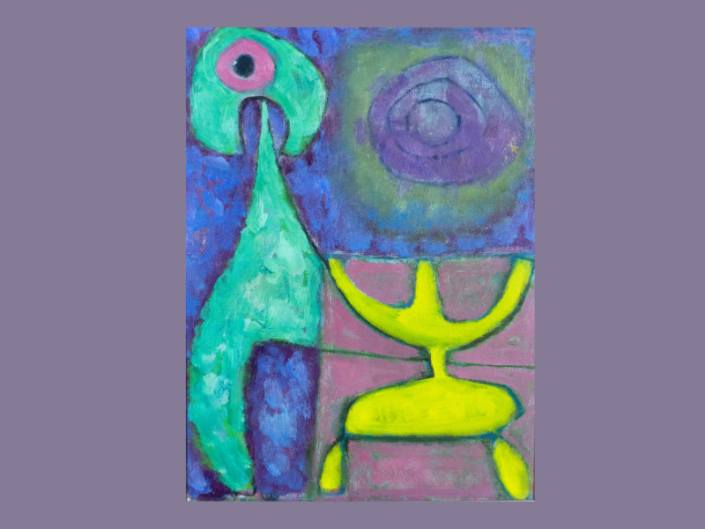Phase 1 of La Casa Cordova’s most recent preservation project was completed in 2024 | La primera fase del proyecto de conservación más reciente de La Casa Cordova concluyó en 2024
La Casa Cordova was built in the mid-1840s and was initially a small two- or three-room adobe structure. In1879, it was purchased by Gabino Ortego and his wife who added three additional rooms along Meyer Avenue. By 1926, La Casa Cordova was one of three properties owned by Refugio Rambaud and later the Cordova Family, who acquired the home in 1934. Today, the home is named after the last family to have lived in the house, headed by Maria Navarette Cordova (1896-1975).
Within La Casa Cordova are a series of installations and interpretive exhibitions that highlight the robust and diverse histories, businesses, and families of downtown Tucson including Barrio Presidio. This includes Maria Luisa Tena’s El Nacimiento, the largest and longest-running nativity scene in the Southwest and Vivamos Siempre Como Hermanos, created by Feng-Feng Yeh and The Chinese Chorizo Project.
In 2024, Bob Vint of Vint & Associates Architects and Eric Means of Means Building and Design did extensive work to stabilize the exterior of the structure and repair the building. This project was recently recognized with a Historic Preservation Award by the Tucson-Pima County Historic Commission.
La Casa Cordova was reopened to the public on November 10, 2024 as part of our Centennial Block Party festivities. The house will be open during regular museum hours.
Acknowledgements
The Tucson Museum of Art and Historic Block would like to acknowledge and give thanks to Refugio Rambaud, Maria Navarette Cordova, and her son Fernando N. Cordova for their stewardship of this property from early 1896 until 1972—and to the Family of Fernando N. Cordova for sharing memories. Special thank you to Maria Luisa Tena, Lydia Otero, Feng-Feng Yeh, Melani Martinez, and many others who continue to care for the communities and histories of the original inhabitants and businesses of Barrio Presidio.
The 2024 preservation of La Casa Cordova has been made possible thanks to generous funding from Mr. and Mrs. William A. Small, Jr., founders of the Stonewall Foundation, a fund of the Community Foundation of Southern Arizona. This project has also been funded in part by Alice Chaiten Baker, Joyce Broan, and the Johanna Favrot Fund for Historic Preservation of the National Trust for Historic Preservation.
Prior to 2024, TMA engaged in at least three other major renovations of La Casa Cordova: in 1972-1975, 1996, and 2016.
In support of the 2016 efforts, TMA is grateful to Bank of America Charitable Foundation and the Latin American Art Patrons, with support from Jean and Regena Bassett, Robert and Ava Brook, Mel Bucholz and Michelle Davidson, Debra Curran, Jim and Carol Deters, Cynthia Frank, Julie Frankston, Peter and Linda Friedman, Harry and Alinda Hakanson, Richard and Priscilla Herrier, Dan and Kit Kimball, Sydney Lemen, Philip McArthur, Adrienne and Larry O’Hare, Betsey Parlato and David Zucker, Judy Pease, Tucson Museum of Art League, Deb Wallace, and gifts made in memory of Mike Wagner. Additional contributions were made in memory of George M. Chatalas.
In the 1970s, La Casa Cordova was placed in the care of the museum. Restoration to the property began, led by the Junior League of Tucson and supported by the Arizona Historical Society, the University of Arizona Tree-Ring Research and the Arizona State Museum, the Arizona State Parks, and more. Support for exhibitions and interpretation was provided by Los Padrinos de la Casa Cordova.
La Casa Cordova se construyó a mediados de la década de 1840 e inicialmente era una pequeña estructura de adobe de dos o tres habitaciones. En 1879, fue adquirida por Gabino Ortego y su esposa, quienes añadieron tres habitaciones más a lo largo de la avenida Meyer. En 1926, La Casa Cordova era una de las tres propiedades de Refugio Rambaud y, después, de la familia Cordova, que la adquirió en 1934. Hoy, la casa lleva el nombre de la última familia que la habitó, encabezada por María Navarette Cordova (1896-1975).
Dentro de La Casa Cordova hay una serie de instalaciones y exhibiciones interpretativas que destacan las robustas y diversas historias, negocios y familias del centro de Tucson, incluyendo el Barrio Presidio. Esto incluye El Nacimiento de María Luisa Tena, el belén más grande y de mayor duración en el suroeste y Vivamos Siempre Como Hermanos, creado por Feng-Feng Yeh y el Chinese Chorizo Project (Proyecto Chorizo Chino).
En 2024, Bob Vint de Vint & Associates Architects y Eric Means de Means Building and Design realizaron un extenso trabajo para estabilizar el exterior de la estructura y reparar el edificio. Este proyecto fue reconocido recientemente con un Premio de Preservación Histórica por la Comisión Histórica del Condado de Tucson-Pima.
La Casa Cordova was reopened to the public on November 10, 2024 as part of our Centennial Block Party festivities. The house will be open during regular museum hours.
Reconocimientos
El Museo de Arte y Bloque Histórico de Tucson desea reconocer y agradecer a Refugio Rambaud, María Navarette Cordova, y su hijo Fernando N. Cordova por su custodia de esta propiedad desde principios de 1896 hasta 1972-y a la Familia de Fernando N. Cordova por compartir sus recuerdos. Un agradecimiento especial a María Luisa Tena, Lydia Otero, Feng-Feng Yeh, Melani Martínez, y muchos otros que siguen cuidando de las comunidades y las historias de los habitantes originales y las empresas de Barrio Presidio.
La preservación de la Casa Cordova en el 2024 ha sido posible gracias a la generosa financiación del Sr. y la Sra. William A. Small, Jr., fundadores de la Fundación Stonewall, un fondo de la Community Foundation of Southern Arizona. Este proyecto también ha sido financiado en parte por Alice Chaiten Baker, Joyce Broan y el Fondo para la Preservación Histórica del Fideicomiso Nacional de la Preservación Histórica).
Antes de 2024, TMA llevó a cabo al menos otras tres renovaciones importantes de La Casa Córdova: en 1972-1975, 1996 y 2016.
En apoyo a los esfuerzos de 2016, TMA agradece a Bank of America Charitable Foundation y a los Patrocinadores del Arte Latinoamericano, con el apoyo de Jean y Regena Bassett, Robert y Ava Brook, Mel Bucholz y Michelle Davidson, Debra Curran, Jim y Carol Deters, Cynthia Frank, Julie Frankston, Peter y Linda Friedman, Harry y Alinda Hakanson, Richard y Priscilla Herrier, Dan y Kit Kimball, Sydney Lemen, Philip McArthur, Adrienne y Larry O’Hare, Betsey Parlato y David Zucker, Judy Pease, la Liga del Museo de Arte de Tucson, Deb Wallace y donaciones en memoria de Mike Wagner. Contribuciones adicionales se hicieron en memoria de George M. Chatalas.
En la década de 1970, La Casa Córdova se puso al cuidado del museo. Comenzó la restauración de la propiedad, dirigida por la Junior League de Tucson y apoyada por la Sociedad Histórica de Arizona, la Investigación de Anillos de Árbol de la Universidad de Arizona y el Museo Estatal de Arizona, los Parques Estatales de Arizona, y más. Apoyo a las exhibiciones y a la interpretación proporcionada por Los Padrinos de la Casa Cordova.

